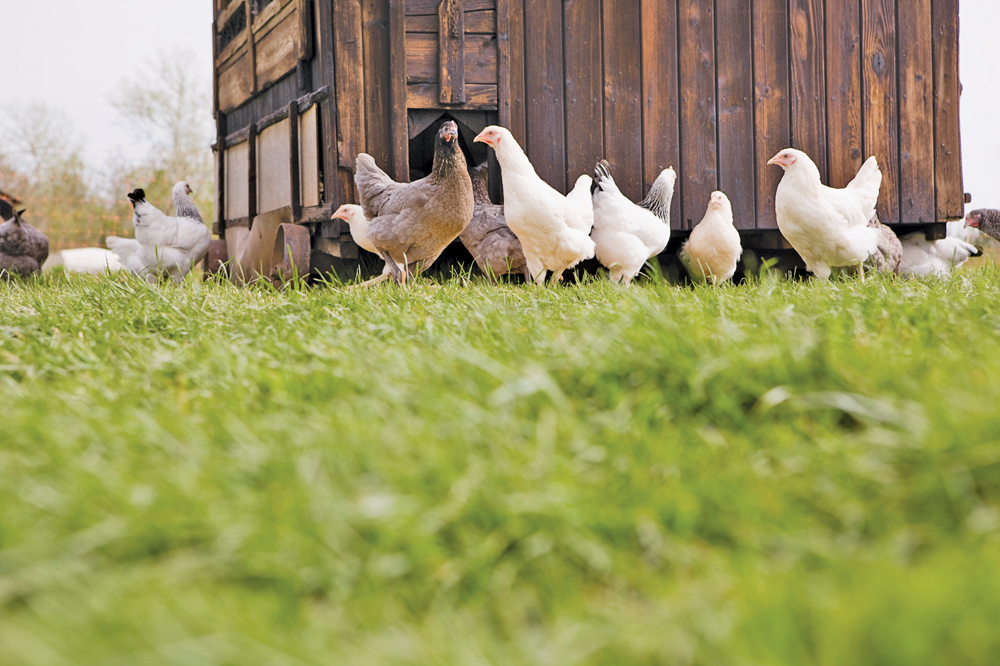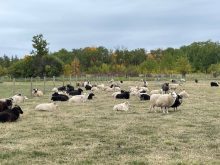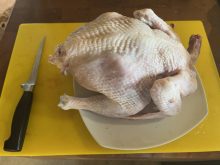It seems that the general public has a very distorted view of farming practices, which is helped by the inability or reluctance of the North American farming community to deliver the real facts.
Many in the urban general public seem to have fond visions of laying hens or broiler chickens tiptoeing through the green, grassy fields clucking happily and laying eggs or growing nicely on “natural” food.
When I grew up on a small mixed farm in Wales, all of the farm animals, pets included, had a purpose — horses, cows, pigs, sheep, chickens, ducks, rabbits, pigeons and geese. The cats controlled mice and rats, and the border collies and corgis herded the animals and guarded the poultry.
Read Also

Gentle treatments for pain in the neck
Heading toward year-end, people unknowingly tense up against the cold and busyness, causing neck pain that can often be treated with appropriate support and gentle mobility, athletic therapist Kathlyn Hossack says.
We raised around 100 chickens annually, usually Rhode Island Reds mostly for chicken dinners and we kept a few ducks for eggs and geese for the Christmas trade. All of the poultry was free-range, but we kept them behind six-foot heavy mesh chicken wire. Why? The dogs’ main function, aside from herding the livestock, was to guard the poultry even though they were effectively fenced off from foxes, stray dogs, crows, feral cats, ravens and magpies.
Chickens, ducks or geese that managed to fly out or otherwise escape from the pens were always in danger, particularly from foxes. Every chicken house was always locked up at night despite the security of the mesh pen. Since we were close to several villages, we also had two-legged poultry thieves. Young chicks were always kept indoors since they were fair game for crows, ravens, seagulls and magpies.
How different is it in Canada for free-range poultry? Much worse.
I live on an acreage just west of Edmonton, Alta., and I have kept free-range chickens for more than 20 years. There are many perils, not counting the bears, cougars and wolves that live in the area. The free-range is a half-acre orchard surrounded by an eight-foot buffalo fence with a three-foot additional chicken wire base. The whole four acres is fenced by eight-foot-high sheep wire acting as a second wildlife barrier. The whole area is patrolled at night by three very active border collies.
What are my free-range laying hen wildlife problems? Foxes, coyotes, racoons, ravens, crows, raptors and owls, in that order. I have also had to check on diseases. Chickens have parasitic worm infections from eating earthworms or slugs, such as roundworms, capillary worms, tapeworms, eye worms and gapeworms. Wild birds flying into the enclosure can introduce these diseases. Chickens also suffer from mites, lice and other pests.
Now, chickens are tropical jungle birds originally and do very poorly in freezing temperatures. So, for six months of the year, in 90 per cent of Canada, the birds must be brought indoors into heated buildings. In addition, since laying hens are light sensitive, they have to be given 14 hours of lighting indoors in order to continue laying eggs. Under short days, less than 10 hours of light, hens will quit laying eggs.
In my own free-range experience, despite the precautions, I have lost hens and roosters to foxes and all of my seven-member flock of bantams to ravens. Ravens in this area will kill bantams, young and adult hens, domestic ducks and even turkeys. Ducks and turkeys are cold tolerant and can go outdoors in the winter, but check on the owls, eagles, ravens and other birds of prey in your area.
In warmer climates in the United States, free-range chickens, even in predator-proof pens, are prayed upon by eagles, ravens and hawks. In the state of Georgia, bald eagles (which cannot be shot) can decimate free-range poultry. In Pincher Creek, Alta., tens of thousands of wild ducks overwinter on open water dam spill areas and feed on leftover food from beef cattle operations. They are preyed upon daily by dozens of bald and golden eagles. The same would likely happen with free-range poultry in British Columbia.
In that province, chickens are allowed outdoors for a minimum of six hours and only when the temperature is above 15 C. Free-range chickens have a “dark” side. They have many more infectious diseases, they can be cannibalistic, and hens may frequently break — and even eat — eggs in crowded nests and the remaining eggs may have to be washed.
So, if you are insisting on eating free-range eggs or free-range roast chicken, consider the facts and remember this system allows for a lot of “fowl” play. Individuals who get into this line of production would need double, or even triple, the amount paid for eggs or roasting hens in order to break even.
I would conclude that free-range chickens could well be unhappy in predator- and pest-prone outdoor environments and they would be much happier in warm, indoor environments among friends. The next time you are asked about confining chickens, tell the vocal public about the dire perils of free-range poultry and ask for their opinions and solutions.
















